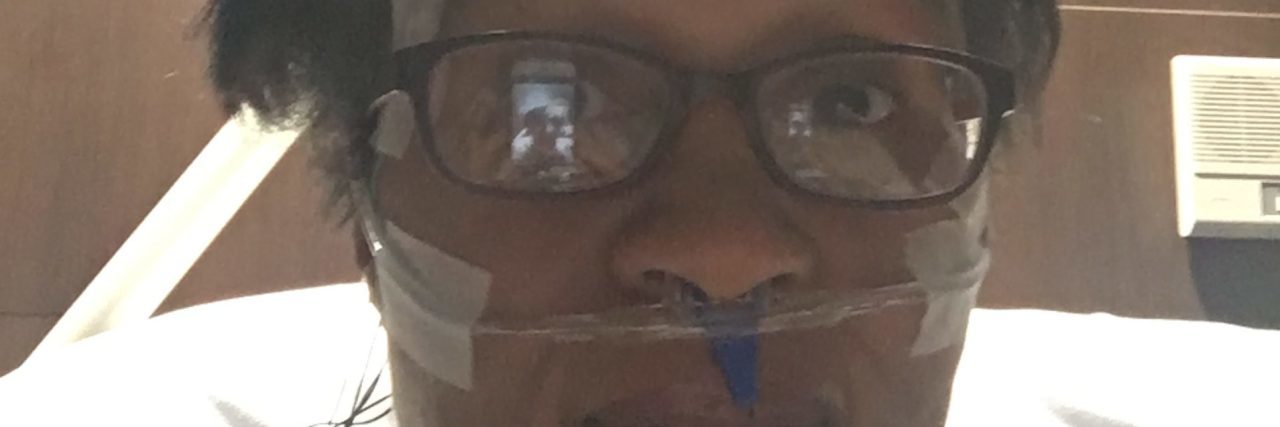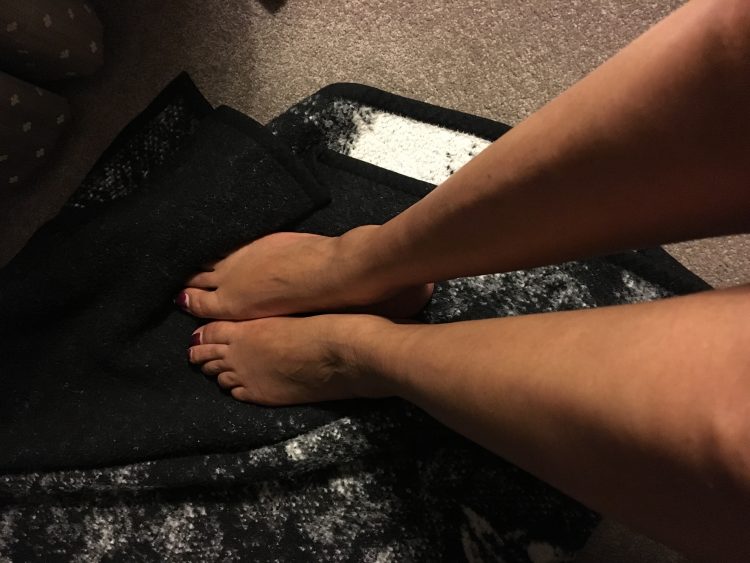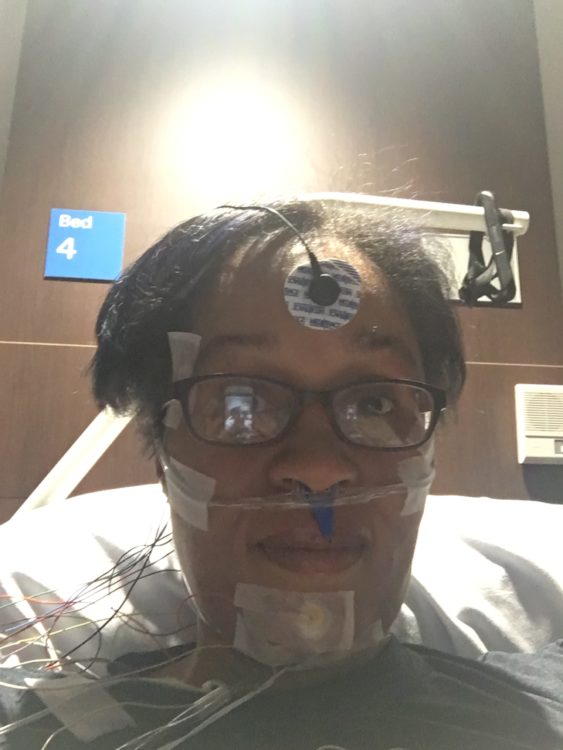As a kid my uncle called me pencil because I had really skinny legs. As a kid it was funny and I liked that he had a nickname for me, but as I got older I became painfully aware of how skinny my legs are. In high school and college other students would talk about my legs and how lucky I was to have such skinny legs. My first night in the college dorm, another student made a very loud comment about my legs in front several other girls. I was so embarrassed, even though I know she wasn’t trying to be mean. On the contrary her comment was meant to be a compliment, but every time someone made a comment it made me dislike my legs even more.
In the fall of 2013 I learned why my legs are so skinny. During a visit to my orthopedic I was informed that I have muscle wasting in my lower legs, but the doctor didn’t know why. Shortly after this I began my search for a diagnosis, and in July of 2015 I was diagnosed with Pompe disease.
Pompe disease is classified as a glycogen storage disease which is part of a group of metabolic disorders characterized by abnormalities involving the use and/or storage of glycogen. People with Pompe don’t produce enough of the enzyme know as acid alpha-glucosidase (GAA), and as a result glycogen accumulates in the lysosomes leading sequentially to cellular malfunction, cellular damage, tissue damage and ultimately organ dysfunction. In Pompe, that is manifested as muscle weakness and wasting. Pompe disease affects skeletal muscles, respiratory muscles and cardiac muscles. It can also affect a person’s ability to chew and swallow.
So when people talk about having an invisible illness, I have one. The picture above is of my legs, and if you look closely you can see that my right leg is smaller. This is a result of muscle wasting, which has caused my knee caps to be out of place. As a result, I have frequent pain in my knees and lower legs; I don’t pick my feet up like most people when I walk which has caused me to fall numerous times. I now wear braces on my legs which provide support to my knees and legs so I have less pain, and they help me to pick my feet up when I walk which prevents me from falling. I also have significant weakness in my right arm and hand which causes numbness in my hand and arm. This numbness makes writing and typing very difficult.
This second picture is of me having a sleep study. I currently sleep with four pillows, because I can’t lay flat or I will stop breathing. Remember Pompe affects my respiratory system and has significantly weakened my diaphragm; my ability to breath is significantly affected when I am laying down. Sometimes I only get three or four hours of sleep a night which leaves me feeling tired the next day. I used to fall asleep at my desk at work, and some days I would come home from work and go straight to bed, which often left me feeling like I was neglecting my family. I am still waiting to hear from my doctor with the results of my sleep study. Honestly I am hoping he says I need a BIPAP mask which will hopefully help me sleep on just one pillow. Sleeping almost vertical is not a natural way to sleep and causes a lot of stress on my shoulders, back and hips.
Extreme heat and cold also affect my ability to breathe. In the summer on really hot days and when the UV index is high, I stay inside. In the winter I must always wear a hat or I will get sick. In the summer sometimes I feel like the air is sitting on my chest, and I struggle to take a deep breath. I have missed many days of work as a result of weather, and believe me, it is not easy to explain to your boss that you can’t come in to work because it’s hot outside.
Pompe affects people in different ways. There are some of us who use mobility assistive devices which range from wheelchairs to leg braces to canes. Some of us use BIPAP or CPAP machines and still others require oxygen all of the time. For me my illness is largely invisible to people who don’t know me. I have had people tell me I don’t look sick, and when I went to the Pompe conference last year at least one person asked me if I actually had Pompe. Although you may not see my disease, I assure you it is there. I live with chronic pain and fatigue and sometimes severe respiratory problems and I do the infamous Pompe shuffle. Due to muscle weakness and wasting, many Pompe patients have a very distinctive walk.
I admit I was a person who doubted a person’s disability based on the way he or she looked. I can remember seeing people parked in disability parking and thinking, that person doesn’t look disabled. I would get upset, because I couldn’t imagine a person being so thoughtless as to take a parking space from a person who truly needed it. After getting my own disability parking placard I was complaining about the lack of disability parking at work and the number of fakers parking in disability spaces, when my friend set me straight. She shared her own story of an invisible heart condition and the limitations she has as a result. I learned a valuable lesson from this conversation, and began to reflect on my own experiences as a person with a mostly invisible disability. I have also learned it can be difficult to observe the different ways in which Pompe affects us differently. For some people the disease and the disabilities that go with it are very visible and are a constant disruption to a person’s life. For others it is always there, but it is not always visible to the outside world.
We want to hear your story. Become a Mighty contributor here.



